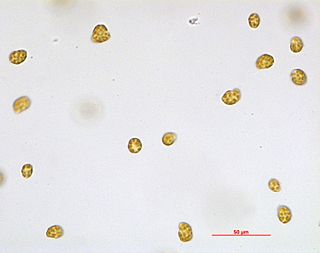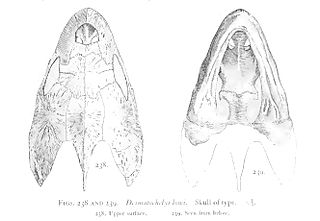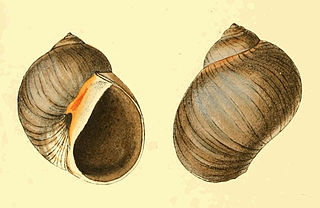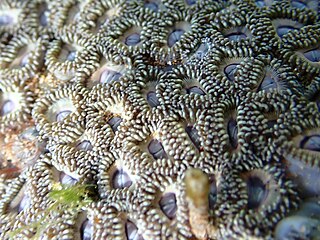
The Iguanidae is a family of lizards composed of the iguanas, chuckwallas, and their prehistoric relatives, including the widespread green iguana.

A tide pool or rock pool is a shallow pool of seawater that forms on the rocky intertidal shore. These pools typically range from a few inches to a few feet deep and a few feet across. Many of these pools exist as separate bodies of water only at low tide, as seawater gets trapped when the tide recedes. Tides are caused by the gravitational pull of the sun and moon. A tidal cycle is usually about 25 hours and consists of two high tides and two low tides.

Zoanthids are an order of cnidarians commonly found in coral reefs, the deep sea and many other marine environments around the world. These animals come in a variety of different colonizing formations and in numerous different colors. They can be found as individual polyps, attached by a fleshy stolon or a mat that can be created from small pieces of sediment, sand and rock. The term "zoanthid" refers to all animals within this order Zoantharia, and should not be confused with "Zoanthus", which is one genus within Zoantharia.

Nautilus is a marine cephalopod genus in the mollusk family Nautilidae. Species in this genus differ significantly, morphologically, from the two nautilus species in the adjacent sister-taxon Allonautilus. The oldest fossils of the genus are known from the Late Eocene Hoko River Formation, in Washington State and from Late-Eocene to Early Oligocene sediments in Kazakhstan. The oldest fossils of the modern species Nautilus pompilius are from Early Pleistocene sediments off the coast of Luzon in the Philippines.

Lamellibrachia is a genus of tube worms related to the giant tube worm, Riftia pachyptila. They live at deep-sea cold seeps where hydrocarbons leak out of the seafloor, and are entirely reliant on internal, sulfide-oxidizing bacterial symbionts for their nutrition. The symbionts, gammaproteobacteria, require sulfide and inorganic carbon. The tube worms extract dissolved oxygen and hydrogen sulfide from the sea water with the crown of plumes. Species living near seeps can also obtain sulfide through their "roots", posterior extensions of their body and tube. Several sorts of hemoglobin are present in the blood and coelomic fluid to bind to the different components and transport them to the symbionts.

Heterosigma akashiwo is a species of microscopic algae of the class Raphidophyceae. It is a swimming marine alga that episodically forms toxic surface aggregations known as harmful algal bloom. The species name akashiwo is from the Japanese for "red tide".

Sinemys is an extinct genus of turtle from the Late Jurassic to Early Cretaceous of China. Three species have been named: S. lens, the type species, from the Kimmeridgian-Tithonian of Shandong; S. gamera, from the Valanginian-Albian of Nei Mongol, and S. brevispinus from Early Cretaceous of Nei Mongol. S. wuerhoensis, from the Aptian-Albian of Xinjiang, is not referrable to this genus. Specimen that may be belong to this genus were also known from Japan, although later abstract considered it as indeterminate sinemydid. The species S. gamera is noted for the presence of a pair of elongate spines projecting outwards and backwards from seventh costal of the carapace. These may have served a hydrodynamic function.

Desmatochelys is an extinct genus of sea turtles belonging to the family Protostegidae. This genus contains two known species, D. lowii and D. padillai. D. lowii was first discovered in 1895, followed by D. padillai in 2015. Having been estimated at over 120 million years old, D. padillai is currently the oldest known species of sea turtle.

Kagoshima Bay also known as Kinkō Bay, Kinko Bay is a deep inlet of the East China Sea on the coast of Japan.

Black kokanee, or kunimasu in Japanese, is a species of landlocked Pacific trout in Japan that was thought to be extinct for 70 years before being rediscovered in 2010. The species was originally endemic to Lake Tazawa, Akita Prefecture, but was translocated to Lake Saiko in an attempt to save the species. These efforts were only discovered to have been successful in 2010 when nine specimens were captured by a team of researchers including a celebrity biologist, 'Sakana-kun'.

Conuber is a genus of predatory sea snails, marine gastropod mollusks in the family Naticidae, the moon snails.

Umimayanthus parasiticus, commonly known as the sponge zoanthid, is a species of coral in the order Zoantharia which grows symbiotically on several species of sponge. It is found in shallow waters in the Caribbean Sea and the Gulf of Mexico.

Zoanthus is a genus of anthozoans in the family Zoanthidae. It is the type genus for its family and order.
Heterocapsa circularisquama is a species of dinoflagellate notable for the production of a biotoxin affecting marine fauna. It is known to produce large red tides off western Japan, causing high bivalve mortality, particularly pearl oysters. It is very similar to Heterocapsa illdefina, however H. circularisquama carries six radiating ridges on its circular basal plate, and its scales have longer spines, among other subtle differences in morphology.

Isozoanthus sulcatus is a species of zoanthid in the family Parazoanthidae.

Zoanthus gigantus is a zoanthid first described from southern Japan.

Zoanthus kuroshio is a species of zoanthid first described from southern Japan.

Brachycnemina is a suborder of zoanthids in the order Zoantharia. Genetic analysis has been used to suggest Brachycnemina is a monophyletic group diverging within the paraphyletic Macrocnemina.
Palythoa mutuki is a species of zoanthid generally found in the Indo-Pacific but also common off the west coast of South America. It occurs at depths ranging between 0 - 28m, being found in both marine and intertidal zones. It was found to hold a higher diversity of associated species than Zoanthus sansibaricus, which inhabits a similar niche. Recent research has indicated that several compounds taken from the ethanolic extract of Palythoa Mutuki have shown strong anti-viral activity towards the dengue virus, which may someday contribute towards a cure for the disease.

Lamellibrachia satsuma is a vestimentiferan tube worm that was discovered near a hydrothermal vent in Kagoshima Bay, Kagoshima at the depth of only 82 m (269 ft) the shallowest depth record for a vestimentiferan. Its symbiotic sulfur oxidizer bacteria have been characterised as ε-Proteobacteria and γ-Proteobacteria. Subspecies have been later found associated with cold seeps at Hatsushima in Sagami Bay and at the Daini Tenryu Knoll in the Nankai Trough with specimens obtained at up to 1,170 m (3,840 ft) depth.





















